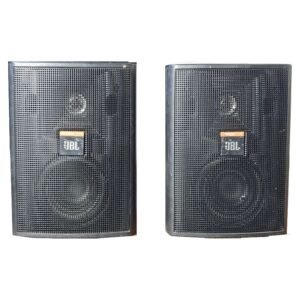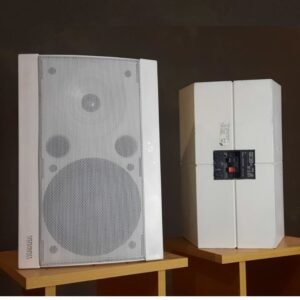Description
The Yamaha MD4 Multitrack Recorder is a vintage piece of audio equipment, originally released in 1997. It’s a fascinating example of the transition period in recording technology, combining a classic analog mixer with digital multitrack recording capabilities using MiniDisc (MD) Data discs.
While largely superseded by computer-based DAWs and more modern digital recorders, the Yamaha MD4 still holds a niche for those who appreciate its hands-on, hardware-centric workflow, robust build, and the unique sound characteristics of its era.
Key Features and Specifications:
The Yamaha MD4 is essentially an integrated mixer and 4-track digital recorder.
- Recording Medium: MiniDisc (MD) Data Discs. These are proprietary discs different from consumer audio MiniDiscs, designed for random access recording of digital audio data.
- Recording Time: A single MD Data disc provides about 37 minutes of 4-track recording, 74 minutes of stereo recording, or 148 minutes of mono recording.
- Non-Linear Editing: A key advantage over cassette multitrack recorders. You could instantly access any point on the disc, program auto-locate and auto-punch-in/out with high accuracy (around 11-12 ms).
- Unlimited Bouncing: Tracks could be bounced (mixed down) digitally without significant signal degradation, unlike analog cassette recorders where each bounce introduced noise.
- Editing Functions: Includes features like song divide, song combine, copy/paste parts of tracks, and cue lists for rearranging songs.
- Yamaha MD4 Mixer Section:
- 4-Channel Full Inline Mixer: A comprehensive analog mixer designed for recording flexibility.
- Inputs:
- 4 x Mic/Line Inputs (1/4″ phone jacks). Channels 1 and 2 also feature XLR balanced inputs (on the MD4S model, some MD4 versions might have fewer XLRs).
- Some models (like MD4S) might include insert I/O jacks on channels 1 & 2.
- Aux Return (L/R – 1/4″ jack or RCA).
- Stereo Sub In (L/R – RCA).
- EQ: Each channel typically features a 3-band EQ (High, Mid, Low) with variable gain, pan, and fader controls.
- Aux Sends: At least one (some models two) Aux Send, allowing connection to external effects processors (like reverb or delay).
- Monitoring: Dedicated headphone output and Monitor Out jacks for external speakers.
- Digital Audio Quality:
- Sampling Frequency: 44.1kHz (CD quality).
- Frequency Response: 20Hz to 20kHz, indicating a full range of captured audio.
- Signal to Noise Ratio: Around 96dB, which is excellent for its time.
- Total Harmonic Distortion: Typically very low, around 0.02%.
- Zero Wow-and-Flutter: As a digital recorder, it eliminated the speed inconsistencies inherent in tape machines.
- MIDI Compatibility: Includes MIDI Time Code (MTC) output for syncing with external MIDI devices (e.g., drum machines, sequencers). Some models also have MIDI In/Out/Thru.
- Dimensions: Approximately 484 x 102 x 412.3mm (MD4) or 413 x 109.5 x 388 mm (MD4S).
- Weight: Around 4.8kg – 6.4kg depending on the exact model.
Yamaha MD4 Target Audience & Current Relevance:
In its prime, the Yamaha MD4 was popular with home studio users, bands, and educators who wanted digital recording quality without the complexity or cost of early computer DAWs.
Today, it’s considered a vintage item. Its primary appeal is to:
- Retro Recording Enthusiasts: Those looking for a specific workflow, sound, or a nostalgic experience.
- Hardware-Centric Producers: Musicians who prefer hands-on mixing and recording without a computer screen.
- Collectors: For its place in recording history.
Yamaha MD4 Limitations:
- MD Data Discs: These are proprietary and now very difficult to find, making the unit’s core functionality hard to use without existing media.
- Integration: Less seamless integration with modern DAWs compared to contemporary audio interfaces.
- Maintenance: Being an older electronic device, potential for component wear and tear.











